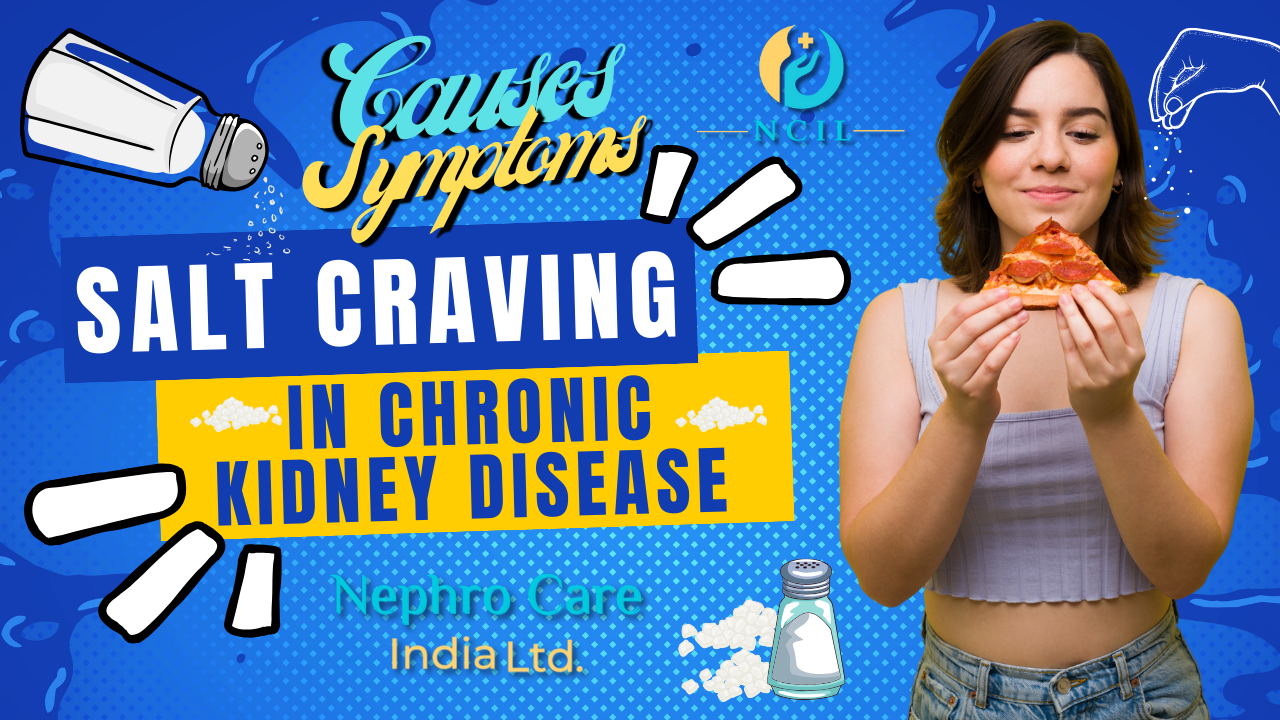
Chronic Kidney Disease (CKD) is a condition categorized by the gradual loss of kidney function over time. Alongside dietary boundaries and lifestyle modifications, CKD patients often encounter a keen craving for salt, which can pose challenges to their health management. Understanding the reasons behind this salt craving and implementing effective strategies to manage sodium intake are crucial steps in maintaining kidney health and overall well-being.
In this blog, we’ll explore the causes of increased salt cravings in CKD patients and explore practical approaches to managing sodium intake for better kidney health.

1. Electrolyte Inequality: CKD disturbs the body’s ability to regulate electrolyte levels, including sodium. As kidney function declines, sodium levels can vary, leading to electrolyte imbalances due to insufficient reabsorption that triggers craving for salty foods.
2. Dehydration: CKD patients may experience ineffective urination and fluid imbalances, which can contribute to dehydration. The body may construe this dehydration as a need for salt to help retain water, leading to increased salt cravings.
3. Medication Side Effects: Some medications essential for CKD management, such as diuretics, can increase salt excretion. This can stimulate salt cravings as the body attempts to maintain electrolyte balance.
4. Loss of Taste Sensation: CKD can affect taste perception, causing certain flavors, including saltiness, to be less pronounced. To compensate for this diminished taste sensation, CKD patients may gravitate towards salty foods to satisfy their cravings.
5. Stress and Emotional Factors: Emotional stress and psychological factors can also influence food cravings, including a desire for salty foods.
1. Monitor Sodium Consumption: CKD patients should be attentive to observing their sodium intake. Avoiding processed and packaged foods, which are typically high in sodium, can help reduce salt intake.
Salt is crucial yet potentially harmful to kidney health. To learn more about the impact of excess salt on kidney health, click the image below.

2. Cook from Scratch: Determining to cook meals from scratch allows CKD patients to have better control over the ingredients and sodium content of their food. Using fresh herbs, spices, and lemon juice to season dishes as an alternative to salt can enhance flavor without adding extra sodium.
3. Limit Processed Foods: Processed foods like canned soups, frozen meals, and deli meats are notorious for their high sodium content. CKD patients should limit their consumption of these foods and opt for fresh, whole foods instead.
4. Cook without salt: Take half the amount of salt from the whole day’s salt allowance. Sprinkle it on the food at lunch time.
5. Gradual Reduction: Rather than making drastic changes to their diet, CKD patients can bit by bit reduce their salt intake over time. This approach allows for a more viable transition and gives the taste buds time to adjust to lower levels of sodium.
6. Hydration: Ensuring sufficient hydration is essential for CKD patients. It can help alleviate salt cravings and maintain proper electrolyte balance.
7. Seek Support: CKD patients should seek support from healthcare professionals, dietitians, and support groups to help them navigate their dietary restrictions and manage salt cravings effectively.
Increased salt craving is a common challenge faced by CKD patients, but with responsiveness and proactive management, it can be effectively spoken. By understanding the reasons behind salt cravings and applying strategies to manage sodium intake, CKD patients can support their kidney health and overall well-being. Through mindful dietary choices, monitoring salt consumption, and seeking support when needed, CKD patients can take control of their health and increase despite the challenges of their condition.